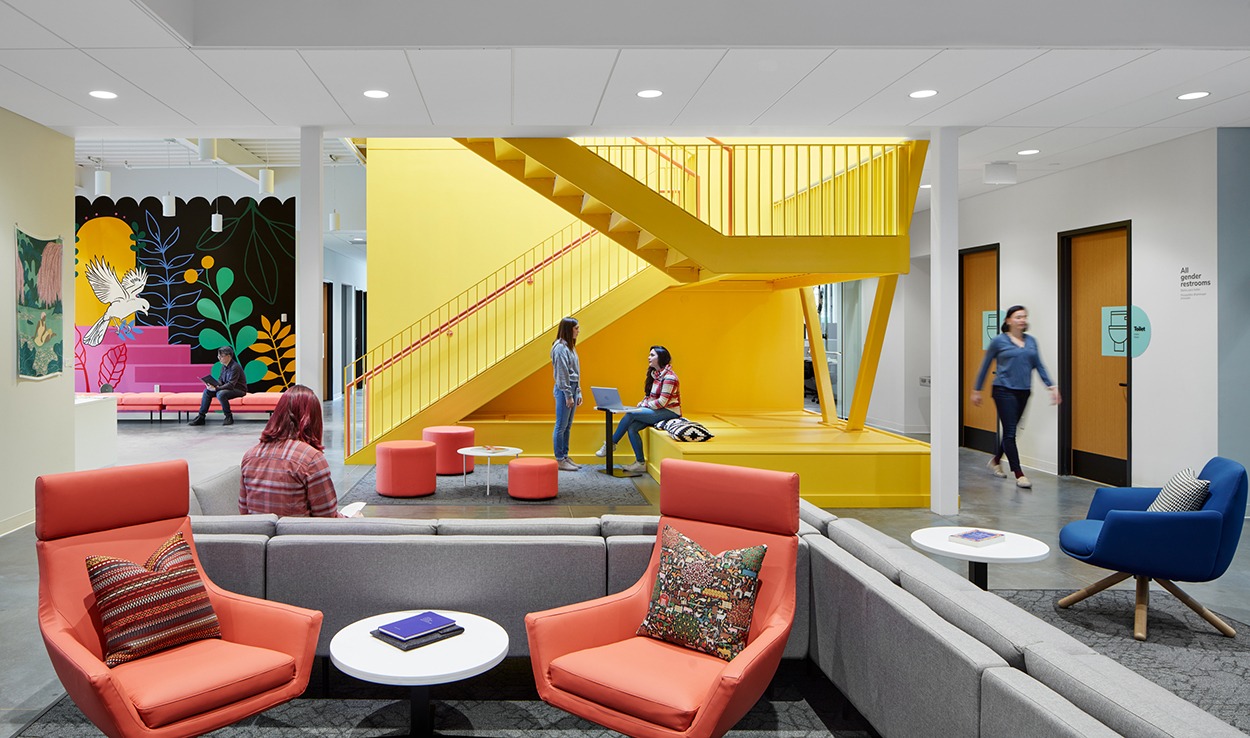After a holiday break, I’m baaack — and glad that we did not fall off the fiscal cliff and the world did not end while I was away. Looking back at 2012, here are a few excerpts from some of my blog posts.
On Designing for Seniors
In order to prepare for the Silver Stampede, consider the risks the built environment poses to the special needs of seniors. Something like an environmental audit may be in order. (January)
What if we started designing healthcare facilities for aging at all stages of life? This makes an even stronger case for universal design. We don’t need geriatric or elder friendly EDs. We need people-friendly EDs. And maybe we don’t need special houses for the elderly. We need communities that support people as they grow from childhood to adulthood to elderhood. (April)
On Healthcare Reform’s Impact on Facility Design & Construction
Healthcare organizations seem to be eschewing the “hospital as hotel” approach in favor of designs that “maximize value and improve medical outcomes” in anticipation of Medicare reimbursements being tied to performance. There’s clearly a happy medium here, because as evidenced by some of the recent Pebble Projects, good design doesn’t have to be one or the other — it can be pleasing, cost-effective, and help improve medical outcomes.
What will it mean to add 30 million more Americans to our system? Where are they going to get their care? In a nutshell, at clinics. Community clinics, specialty clinics, retail-based clinics. These may be managed by their local healthcare system or by CVS, Walgreens, Target, or Wal-Mart. (June)
While it’s unlikely more hospitals or EDs will be needed, existing ones will have to be renovated and redesigned. We’ll need more clinics (check out this website for the latest ideas on clinic design). And we’ll have to renovate our existing homes or design new ones that accommodate people of all ages and health status (check out this website for resources on universal design for the home). (November)
The shift from an illness-based model to a wellness-based model means we’re going to need spaces that support the technology and interface to effectively interact and communicate with patients — in the hospital, clinic, doctor’s office, and at home. There are many implications for design. (December)
On Michael Graves
Michael Graves’ architectural and design talents, when paired with the illness that put him in a wheelchair about 10 years ago, have given him a unique perspective on product design. His celebrated building designs and product designs for Alessi and Target made him a legend long ago. But I think it is wrong to single him out as being the only one who is doing anything innovative today in hospital patient room furniture design. (February)
On Evidence-Based Design
It makes sense that an evidence-based process can be applied to other disciplines within the healthcare design, construction, and operations field. This is because, as [Kirk] Hamilton and [Zofia] Rybkowski point out in their article, healthcare administrators and managers who are making decisions about building design, construction, and operations are “aware of evidence-based medicine, evidence-based nursing practice, and data-driven management.” (February)
Evidence-based design is about basing design decisions on the best available evidence. Lean is about making design decisions that create more value using fewer resources. They are both used with the end objective of creating better design solutions. (May)
On Design
The 630,000 sq. ft. Princeton Medical Center, which opens at the end of May, sets a new bar for healthcare facility design and is the latest gem in the Pebble Project portfolio. Visionary CEO Barry Rabner and his team, along with project architect HOK and evidence-based design, artwork consultant CAMA Inc., and construction manager Turner Construction are to be congratulated on pushing the envelope for architectural and interior design excellence. (April)
Recently, I’ve toured some new hospitals, a couple of which were big budget, high profile projects. And while they did some nice things architecturally and incorporated the latest thinking around decentralized nursing and access to natural light/views to the outdoors, they missed the mark when it came to the patient and staff areas. (June)
The next big idea for the patient room is the Patient Mobility Platform — a concept developed by Roger Leib to enable patients to recover faster than currently possible in hospital settings due to introduction of mobility and assisted rehabilitation at an earlier stage of treatment. (October)
On Satisfaction & Safety
There is plenty of information available to help hospital administrators reduce noise through the design of the built environment. If you’re not looking at it as a way to improve your HCHAPS scores, you should be. (April)
The environment should enable the hospital staff to do their best work and feel good about the organization they work for. “Many hospitals haven’t created environments where people can do their best work,” said patient satisfaction expert Mary Malone, pointing out that many think that because they have a nurse break room, that’s all they need. “Where do housekeepers put their coats?” she asked. (August)
We should start thinking about ways to incorporate more health design nudges not only in our schools and communities, but healthcare facilities, too. Ones that will encourage healthy eating (steal that apple shelf idea!), exercise, handwashing, and other behaviors that affect patient and staff safety. (December)
P.S. Please do me a favor -- if you liked this post and like this blog, please share it with others by sending them the link or posting it on your Twitter, LinkedIn, or Facebook. Also, don't forget to subscribe, so you'll get emails when new content is posted. Thanks!







